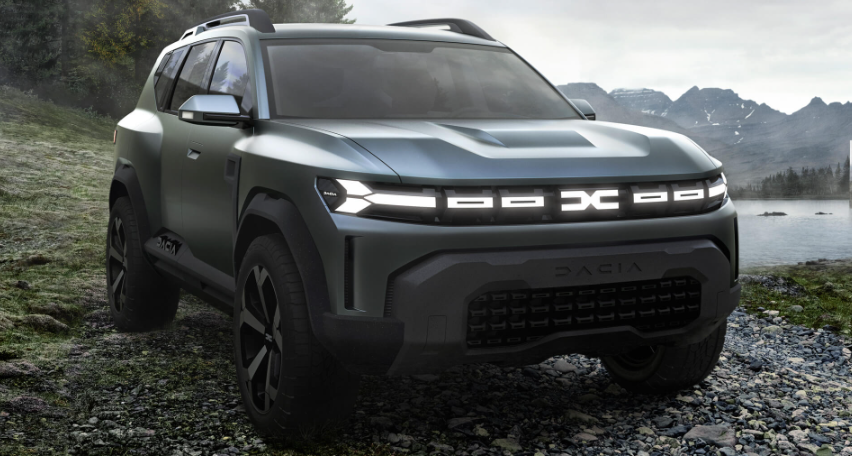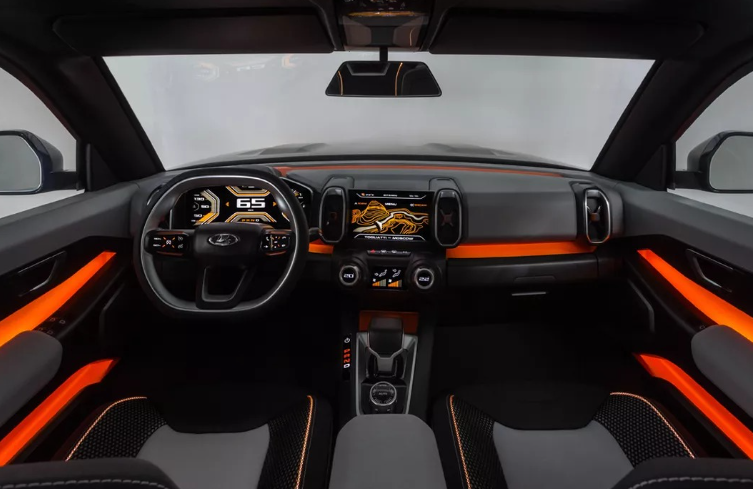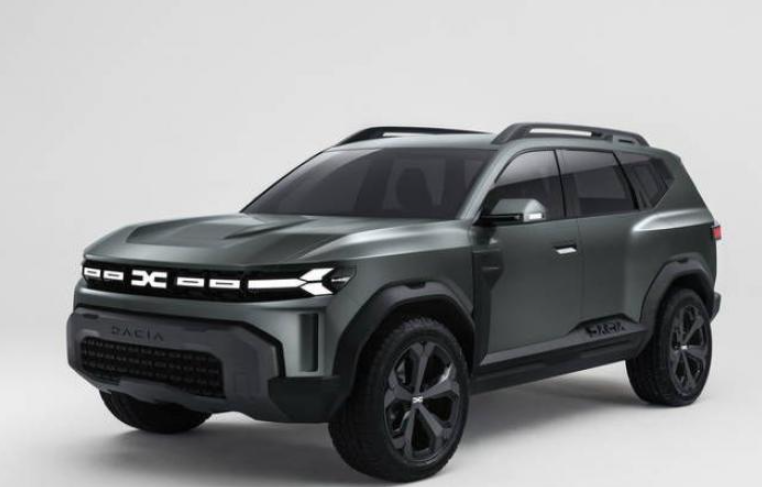Renault announced recently that it is developing a brand-new generation for its low-cost crossover on the European market. Next year, the 2024 Dacia Duster is set to debut. The 2024 Dacia Duster will be built on a new platform, and it has been seen in testing. Duster III, the all-new Duster, will be a significant upgrade over its predecessor. The first Duster was released in 2018, and two updates were made to it. Dacia can do this because it will be developing the vehicle on the CMF B platform.
The CMF-B was designed for B-segment cars, i.e. superminis and compacts. They can be as compact as the Renault Clio. The Duster III is closer to the Renault Arkana in terms of size and engineering. Duster is expected to grow slightly in size, making it more useful and therefore better value. The current model is 4.32 meters or 170 inches long. Two or three inches more can be added. Dacia is preparing a larger crossover called the 2025 Bigster. It measures around 4.6 meters (181 inches) long.
2024 Dacia Duster Changes
Dacia has always relied on simplicity to be successful. The 2024 Duster, however, will require a hybrid powertrain to meet the EU’s emission limits. This is in addition to the regular powertrain which could be mild hybrids. The 2024 Duster can access a hybrid drivetrain developed already by using the CMF B platform. The Jogger is a van/crossover hybrid that has been converted into a hybrid drive. It uses a 1.6-liter electric motor combination with 140 horsepower. Other CMF-B crossovers such as the Arkana or Captur have similar systems.
Renault offers a more expensive plug-in hybrid drive, which has 160 hp and a battery of 9.8 kWh. This can provide a range of up to 50km (31 miles). Duster is a good candidate for this, even though it is expensive. The remainder of the range is made up of 1.0- and 1.3-liter turbocharged engines with auto and 4×4 gearboxes on the higher grades. Other emerging markets may still use smaller engines. For example, a 1.5L engine in India or a 2.0L engine in Brazil. The Duster can be found all over the globe, often as a Renault and Nissan.
Exterior & Interior
These renderings, courtesy of Kolesa, provide an early look at the design of Duster III. These renderings are based on recent spy photos. We’re sure that this is the look of the car, even though we haven’t seen it without camouflage. The design of the Bigster concept has been previewed in large part, so the features on the front are easily identifiable. The 2024 Duster features the new X badge at the center of a narrow grille, and vents similar to those on the Evoque bumper. The LED taillights and headlights are not only an upgrade but also a nice touch.
Two features were very obvious on the prototype that was spotted in Spain. The prototype had 17-inch tires wrapped in 215/65 R17 rubber and disc brakes on the rear. The people are very excited. Volkswagen puts cheap drum brakes in its cars, while Dacia goes upmarket. The world is going crazy.
Bigger-Inspired Style
Our associates have shown us exclusive renderings that show the new Duster sharing most of its styling with the Bigster concept. Dacia has a reputation for being a master at cost-cutting, and this will be evident in the SUV range. The Duster may be a smaller version of the Bigster, which is confirmed to go into production.
The models may share several body panels, including the LED taillights and headlights, bumpers with skid plates integrated into them, boxy, pronounced fenders as well as the snorkel-inspired design on the profile. The second-generation Duster introduced the latter as a stylish and cost-effective way to connect the offset fenders to the doors. It became a signature element of the SUV. Duster is likely to have regular door handles and will lose some of the high-tech features from the fancier concept to cut costs. The new Dacia logo will be featured on the vehicle in 2022. It is already used in advertising materials.
Dashboards
The dashboards of the SUVs may also share the same design, following the current Dacia lineup. The Bigster concept revealed that the latter will have a higher and larger touchscreen for the infotainment, a digital instrument panel, a Dacia first, and switchgear derived from Renault. Duster’s value for money makes us think that Dacia will keep a good amount of scratchy hard plastics in the center console, dashboard, and door cards. Dacia designers can enhance the perceived quality of the Duster with durable upholstery and modern textures.
The Duster’s length will probably continue to grow compared to its current 4,341 mm (170.9 inches) and reach closer to Jogger’s 5,447 mm (179 inches). The result will be more room for passengers and luggage. Dacia is determined to maintain the Duster’s reputation as one of the most spacious models in the segment. Its practical design will appeal to families and active people.
Dacia is Electrified
Dacia’s Duster is the last model to not be based on the new CMFB architecture of Groupe Renault, which is already used in the Sandero and Sandero Stepway as well as the Logan and Jogger. This will change in 2024 with the release of the third-generation Duster, which will feature a stretched version of the same platform that will underpin the bigger Bigster in 2025.
Dacia is committed to offering ICE-powered vehicles as long as they can, as part of their strategy for affordable pricing. Dacia officials admit that they can electrify their range if needed. The CMF-B is compatible with HEV, BEV, PHEV and MHEV powertrains. The Duster could come in an electrified version, given that the majority of European markets will ban ICE engines by 2030.
The Romanian SUV may inherit the plug-in hybrid system used by the Renault Captur E-Tech or the self-charging hybrid system of the Nissan Juke Hybrid. The powertrain consists of a 1.6-liter petrol engine with a 94-hp (69-kW/94-PS) output and 148-Nm torque, a 48-hp (36-kW/49-hp) electric motor, and a multi-mode transmission that sends the power to front wheels. The HEV has a battery pack with a capacity of 1.2 kWh, while the PHEV is equipped with a 9.8 kWh one.
All of these models, along with the new Mitsubishi ASX, are close relatives to the upcoming Duster even though the latter will be using a budget-friendly version of the CMF B platform. Dacia is trying to keep the Duster affordable, so it wouldn’t surprise us if they released lesser versions that used pure ICE engines or simple mild-hybrids. These would provide a good combination of fuel economy and low production costs. The diesel engine will likely be removed from the range as it is difficult for Groupe Renault’s engineers to maintain it to meet the new emission standards. The bi-fuel LPG/petrol option may be retained as an alternative in the entire Dacia line.
Off-Road Looks Require A 4WD Option
There is a good chance that the Duster, or at least the high-end trims, will still be available with 4WD. It will be one of few choices in the segment that offers four-wheel drive, generous ground clearance, and decent approach and departure angles, in keeping with its no-frills look. The current duster has a ground clearance of 214-217 inches (8.4-8.5 inches), a 30deg angle approach, and a 34-36 deg angle departure.
2024 Dacia Duster Revealed
The Dacia Duster third generation will also be manufactured in Mioveni Romania, just like its predecessors. We could see some mules shortly, as the model is still under development. The official debut of the Dacia Duster is expected to be in 2024.





